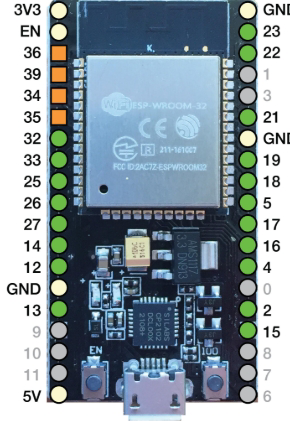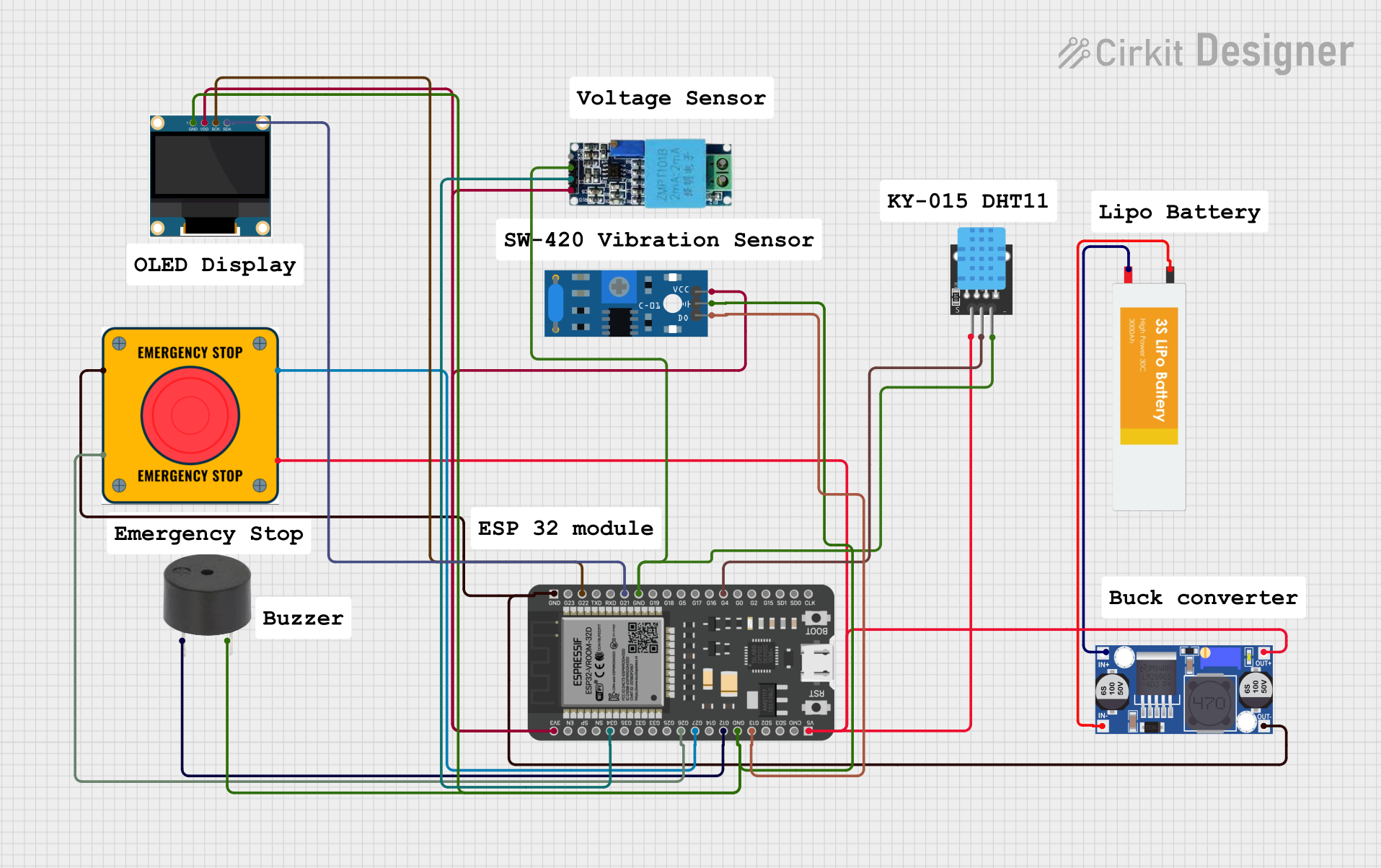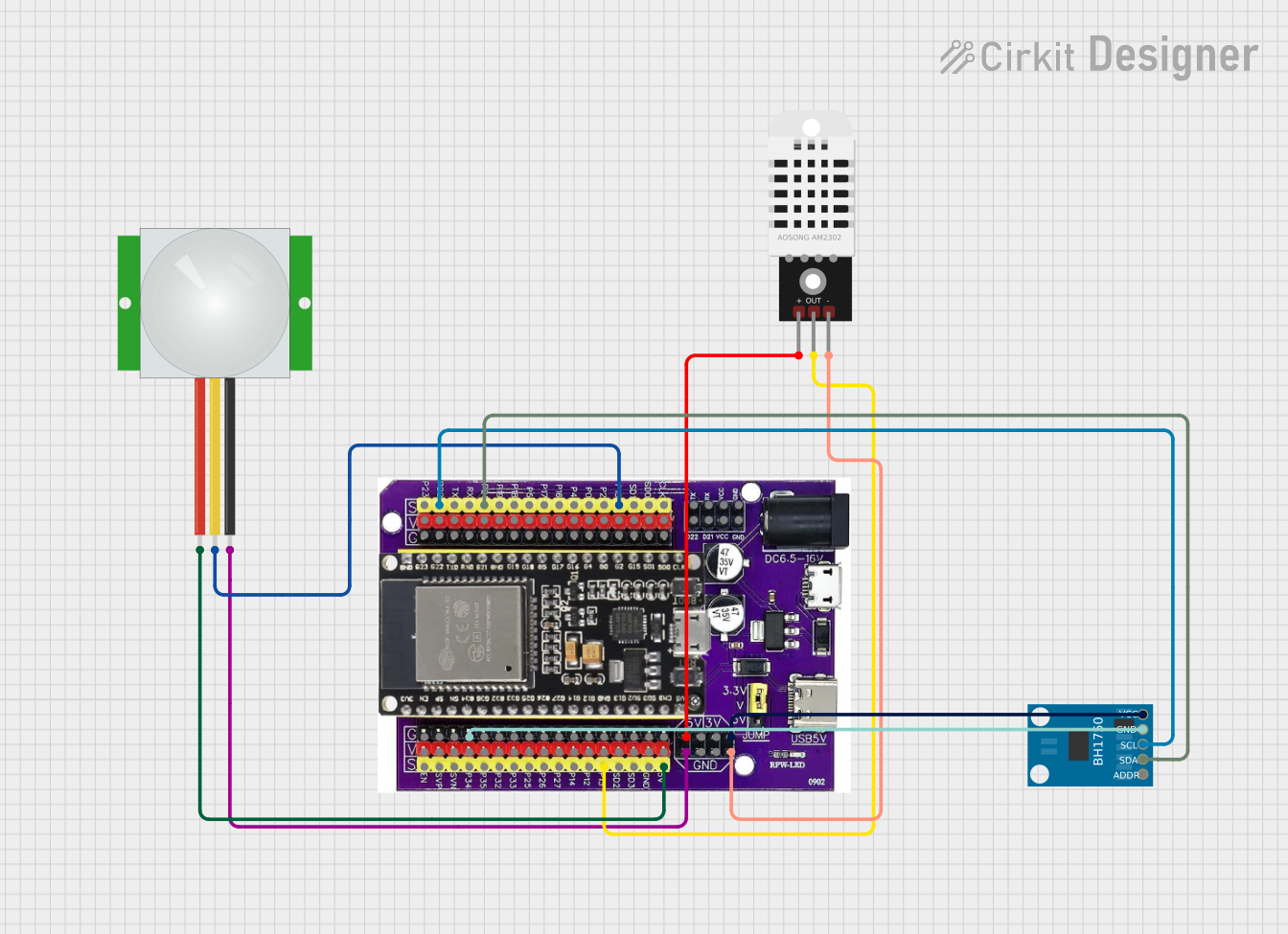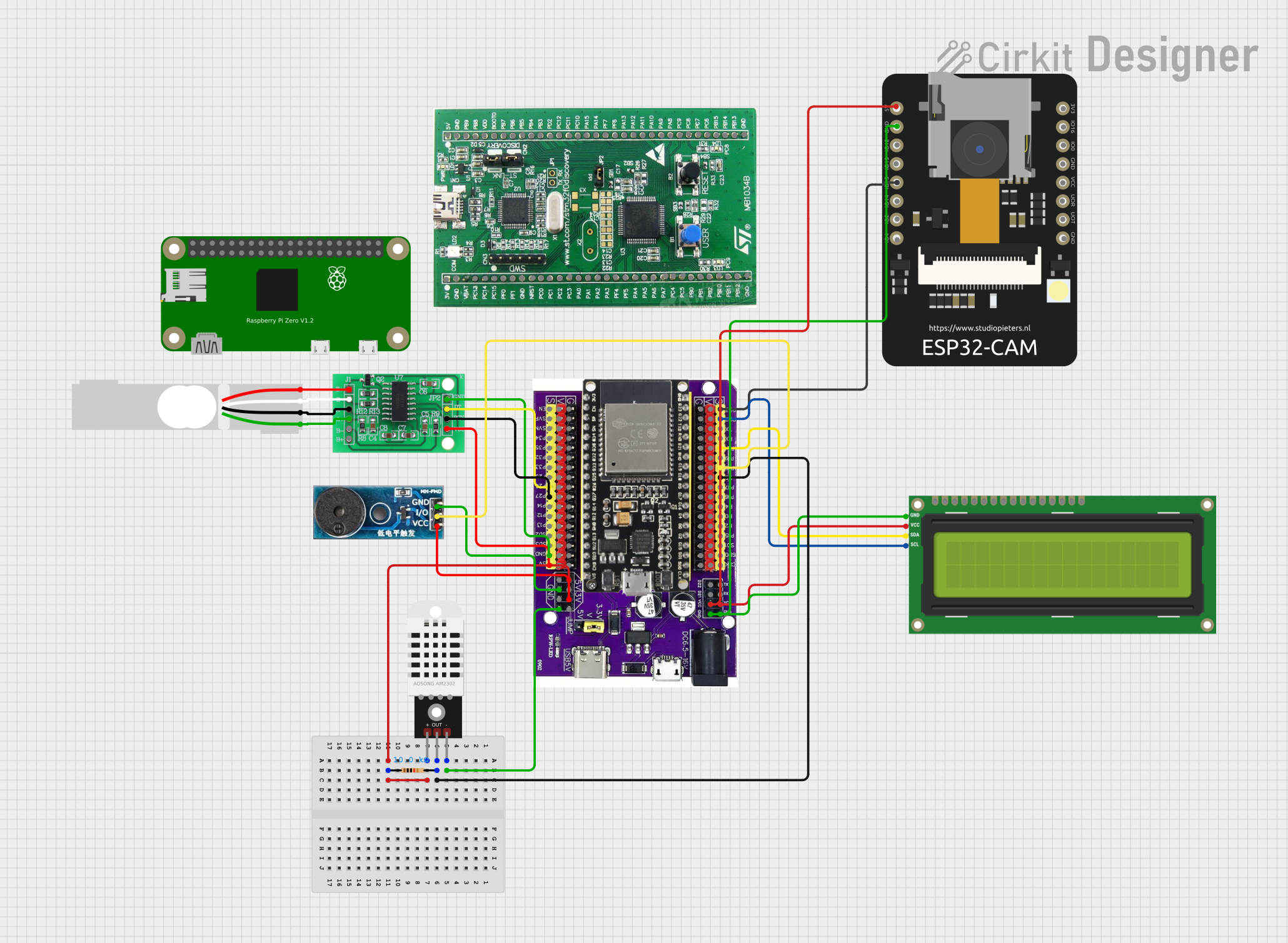
How to Use esp32: Examples, Pinouts, and Specs

 Design with esp32 in Cirkit Designer
Design with esp32 in Cirkit DesignerIntroduction
The ESP32 is a low-cost, low-power system on a chip (SoC) developed by Espressif Systems. It features integrated Wi-Fi and Bluetooth capabilities, making it an ideal choice for Internet of Things (IoT) applications, smart devices, and embedded systems. The ESP32 is highly versatile, offering dual-core processing, a wide range of GPIO pins, and support for various communication protocols.
Explore Projects Built with esp32

 Open Project in Cirkit Designer
Open Project in Cirkit Designer
 Open Project in Cirkit Designer
Open Project in Cirkit Designer
 Open Project in Cirkit Designer
Open Project in Cirkit Designer
 Open Project in Cirkit Designer
Open Project in Cirkit DesignerExplore Projects Built with esp32

 Open Project in Cirkit Designer
Open Project in Cirkit Designer
 Open Project in Cirkit Designer
Open Project in Cirkit Designer
 Open Project in Cirkit Designer
Open Project in Cirkit Designer
 Open Project in Cirkit Designer
Open Project in Cirkit DesignerCommon Applications and Use Cases
- IoT devices (e.g., smart home systems, sensors, and actuators)
- Wearable technology
- Wireless communication hubs
- Robotics and automation
- Data logging and remote monitoring
- Prototyping and educational projects
Technical Specifications
The ESP32 is available in various module configurations, but the following specifications are common across most variants:
Key Technical Details
- Processor: Dual-core Xtensa® 32-bit LX6 microprocessor
- Clock Speed: Up to 240 MHz
- RAM: 520 KB SRAM
- Flash Memory: Typically 4 MB (varies by module)
- Wi-Fi: 802.11 b/g/n (2.4 GHz)
- Bluetooth: v4.2 BR/EDR and BLE
- Operating Voltage: 3.0V to 3.6V
- GPIO Pins: Up to 34 (multiplexed with other functions)
- ADC: 12-bit, up to 18 channels
- DAC: 2 channels (8-bit resolution)
- PWM: Supported on most GPIO pins
- Communication Protocols: SPI, I2C, UART, I2S, CAN, Ethernet MAC
- Power Consumption: Ultra-low power modes available (as low as 5 µA in deep sleep)
Pin Configuration and Descriptions
The ESP32 has a flexible pinout, but the following table describes the most commonly used pins:
| Pin Name | Function | Description |
|---|---|---|
| GPIO0 | Input/Output, Boot Mode Select | Used for boot mode selection during startup. Can also be used as a GPIO pin. |
| GPIO2 | Input/Output, ADC, PWM | General-purpose pin with ADC and PWM capabilities. |
| GPIO12 | Input/Output, ADC, Touch Sensor | Can function as an ADC input or capacitive touch sensor. |
| GPIO13 | Input/Output, ADC, Touch Sensor | Similar to GPIO12, supports ADC and touch sensing. |
| GPIO15 | Input/Output, ADC, PWM | General-purpose pin with ADC and PWM capabilities. |
| GPIO16 | Input/Output | General-purpose pin. |
| GPIO17 | Input/Output | General-purpose pin. |
| EN | Enable | Active-high pin to enable or reset the chip. |
| 3V3 | Power Supply | Provides 3.3V power to the ESP32. |
| GND | Ground | Ground connection. |
Note: The exact pinout may vary depending on the ESP32 module (e.g., ESP32-WROOM-32, ESP32-WROVER).
Usage Instructions
How to Use the ESP32 in a Circuit
- Powering the ESP32:
- Connect the 3V3 pin to a 3.3V power source.
- Ensure the GND pin is connected to the ground of the circuit.
- Programming the ESP32:
- Use a USB-to-serial adapter or a development board with a built-in USB interface.
- Install the ESP32 board package in the Arduino IDE or use the Espressif IDF (IoT Development Framework).
- Connecting Peripherals:
- Use GPIO pins for digital input/output.
- Connect sensors to ADC pins for analog input.
- Use I2C, SPI, or UART for communication with external devices.
Important Considerations and Best Practices
- Voltage Levels: The ESP32 operates at 3.3V logic levels. Avoid connecting 5V signals directly to its GPIO pins.
- Boot Mode: Ensure GPIO0 is pulled low during startup to enter programming mode.
- Power Supply: Use a stable power source to avoid unexpected resets or malfunctions.
- Deep Sleep: Utilize the deep sleep mode for battery-powered applications to conserve energy.
Example Code for Arduino IDE
The following example demonstrates how to blink an LED connected to GPIO2:
// Define the GPIO pin for the LED
#define LED_PIN 2
void setup() {
// Set the LED pin as an output
pinMode(LED_PIN, OUTPUT);
}
void loop() {
// Turn the LED on
digitalWrite(LED_PIN, HIGH);
delay(1000); // Wait for 1 second
// Turn the LED off
digitalWrite(LED_PIN, LOW);
delay(1000); // Wait for 1 second
}
Troubleshooting and FAQs
Common Issues and Solutions
ESP32 Not Detected by the Computer:
- Ensure the correct USB driver is installed (e.g., CP210x or CH340 driver).
- Check the USB cable for damage or try a different cable.
Upload Fails with "Failed to Connect" Error:
- Hold the "BOOT" button on the ESP32 board while uploading the code.
- Verify that GPIO0 is pulled low during programming.
Random Resets or Instability:
- Check the power supply for sufficient current (at least 500 mA recommended).
- Add a capacitor (e.g., 10 µF) near the 3V3 pin to stabilize the power.
Wi-Fi Connection Issues:
- Ensure the correct SSID and password are used in the code.
- Check for interference or weak signal strength.
FAQs
Q: Can the ESP32 operate on 5V?
- A: No, the ESP32 operates at 3.3V. Use a voltage regulator or level shifter for 5V systems.
Q: How many devices can connect to the ESP32 via Bluetooth?
- A: The ESP32 supports up to 7 devices in Bluetooth Classic mode and multiple devices in BLE mode.
Q: Can the ESP32 be used without Wi-Fi or Bluetooth?
- A: Yes, the ESP32 can function as a standalone microcontroller without using its wireless features.
Q: What is the maximum range of the ESP32's Wi-Fi?
- A: The range depends on environmental factors but typically extends up to 100 meters in open space.
By following this documentation, users can effectively integrate the ESP32 into their projects and troubleshoot common issues.